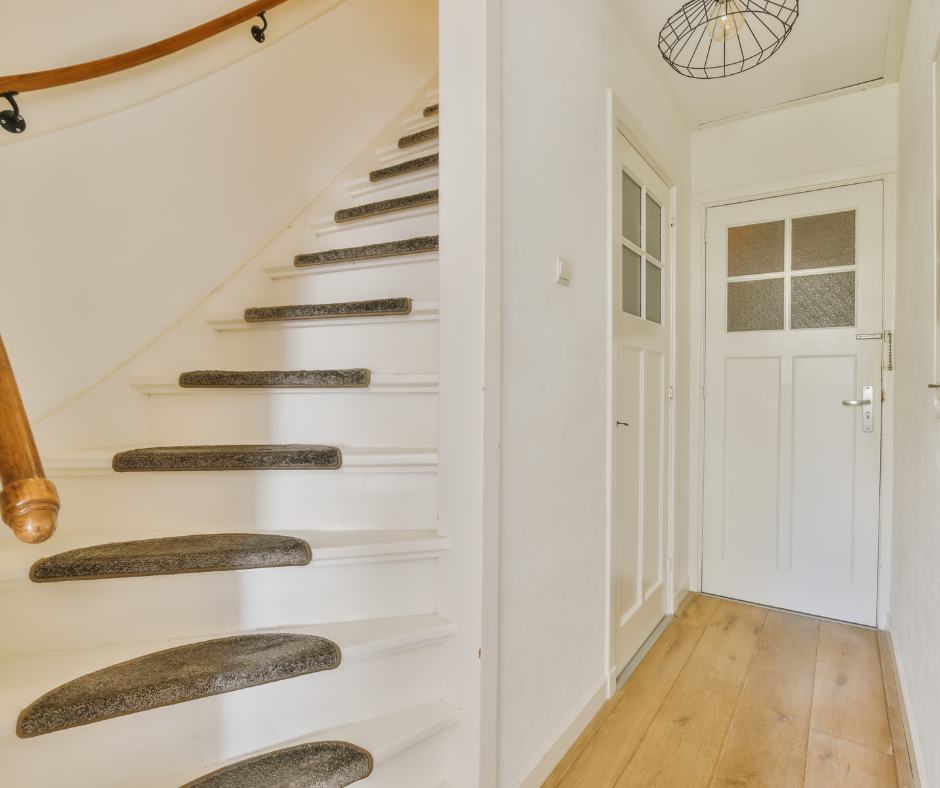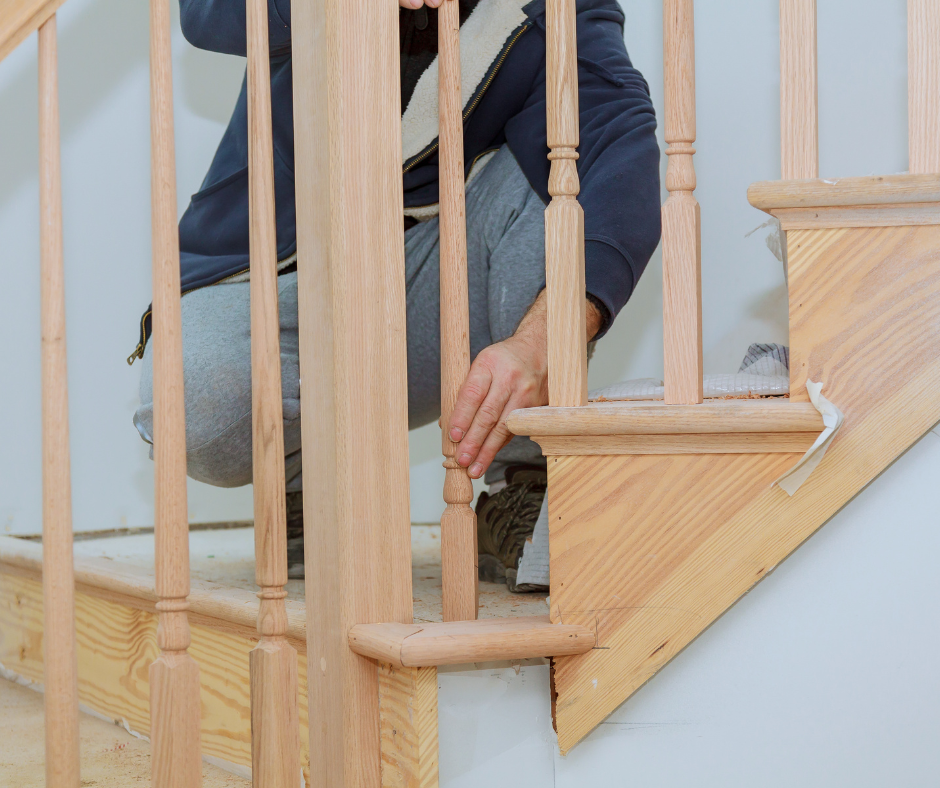Slipping or missing a step on your staircase can turn a simple walk into a hazard. A stair tread bullnose overhang for safer step is the rounded edge that extends slightly past the riser, giving each foot more space to land securely. This guide will show you how the right overhang makes your stairs safer, meets building codes, and enhances both style and comfort for every step.
By continuing, you’ll learn how to measure, choose, and install a stair tread overhang that not only protects your family but also elevates your home’s design. Whether you’re adding carpet, hardwood, or considering a complete remodel, these tips will help you make the best choice for a safer, better-looking staircase.
What Is a Stair Tread Bullnose Overhang?
A bullnose overhang is the rounded lip on the front edge of a stair tread. Unlike sharp or square edges, a bullnose creates a smooth curve that extends about ¾ to 1¼ inches beyond the riser below. This not only adds visual appeal but also provides crucial foot space, making every step safer and more comfortable.
For staircases with carpet, the bullnose allows the carpet to wrap tightly and stay in place. For hardwood stairs, it creates a smooth, seamless transition from step to step. Whether your stairs are new or old, adding a bullnose can transform both safety and style.
Why Choose a Bullnose Overhang for Safety?
The stair tread bullnose overhang for safer step plays a vital role in reducing slips and improving comfort. When each tread extends slightly forward, it gives every footfall more surface area, especially during descent. This extra space can prevent missed steps and provide a better balance point for people of all ages, including children and seniors.
The rounded edge also helps define the end of each stair. In low-light conditions or on high-traffic staircases, the bullnose makes steps more visible and predictable, reducing the risk of missteps. Plus, the smooth curve softens footfalls, making the staircase quieter and more pleasant to use.
How Tread Overhang on Stairs Improves Usability
Many homeowners underestimate how much tread overhang on stairs improves the way stairs feel and function. The extra inch created by a bullnose overhang offers more space to place your foot securely, especially on narrow steps. This is especially important for DIY stair projects or updates to older homes where stair dimensions may not meet today’s building standards.
For both carpeted and wood stairs, this added space makes a big difference. The overhang provides the same safety benefits whether you’re installing a runner or leaving the wood exposed. Without it, stairs can feel cramped and hazardous, increasing the chance of a slip or stumble.
The Role of Stair Tread Overhang in Carpeted Stairs
When adding carpet, a stair tread overhang serves both function and style. The overhang gives the carpet a natural edge to wrap around, ensuring a snug fit that stays in place under daily use. It also helps the carpet lay flat, preventing bunching or sliding that could cause trips.
A stair tread overhang for carpet also helps protect the edges of the stairs from wear and tear. In busy homes, especially those with kids or pets, this extra durability means longer-lasting, better-looking stairs. Carpet also softens footfalls, making the staircase quieter—a valuable feature in active households.
Building Code Guidelines for Safe Overhangs
It’s not just about looks—stair tread bullnose overhangs for safer steps are often required by building codes. In the U.S., stair treads must typically be at least 10 inches deep, and if they’re less than 11 inches, a bullnose overhang is necessary. This brings the usable space of each step up to safe standards.
Standard building code guidelines include:
-
Overhang depth: between ¾ inch and 1¼ inches
-
Tread depth minimum: 10 inches
-
Overhang required if tread is less than 11 inches
These guidelines ensure that stairs are both comfortable and safe to use. Even if your staircase isn’t new, adding a bullnose can help it meet these standards and improve overall safety.
How to Measure a Bullnose Overhang
Measuring your overhang is simple but must be precise. Place a tape measure or straightedge on top of the stair tread. Measure horizontally from the front edge of the tread to the face of the riser below.
If your stairs are carpeted, include the carpet’s thickness in the measurement. The total should fall within the ¾ to 1¼ inch range. This ensures compliance with most codes and a proper fit for your carpet or wood stair finish.
Choosing the Right Bullnose Overhang Size
Selecting the correct overhang size is crucial for both safety and appearance. An overhang that’s too long could become a tripping hazard, while one that’s too short may not provide enough support. Most codes and experts recommend keeping it within ¾ to 1¼ inches.
For carpet stair treads, consider the carpet’s thickness and pile. A thicker carpet may require a slightly shorter pre-install measurement to ensure the final overhang falls within the recommended range once installed.
How Tread Depth Affects Overhang
Tread depth and bullnose overhang work together to create a safe staircase. If your stair treads are 11 inches or deeper, you might not need a bullnose to meet code. But for treads that are narrower, a bullnose overhang can compensate for limited depth and make each step more comfortable.
This adjustment is especially important in older homes, where original stairs may not meet modern requirements. By adding an overhang, you can update safety without needing a full stair replacement.
Matching Overhang Style to Your Staircase
A bullnose doesn’t just have to be functional—it can also be stylish. You can choose a full bullnose, which offers a completely rounded edge, or a half bullnose with a flatter face for a more modern look. An eased edge gives a subtle curve, ideal for a contemporary design.
Pair your chosen bullnose with the right material—whether wood, carpet, or laminate—to match your home’s style. This small detail can tie together your entire staircase, making it feel intentional and polished.
Carpet vs. Wood for Overhangs
Deciding between carpet and wood depends on your household’s needs and style. Carpet stair treads offer softness and quiet, making them ideal for family homes with kids and pets. Wood treads provide a sleek, easy-to-clean surface that lasts for years.
Regardless of your choice, both materials benefit from a proper bullnose overhang. It enhances safety, improves appearance, and extends the life of your stairs by protecting edges from daily wear.
DIY-Friendly Options from Oak Valley Designs
Oak Valley Designs offers stair solutions that make your project simple and professional. Our products are designed for easy DIY installation, using high-quality materials and adhesives that don’t damage your floors. You can choose from a variety of colors, sizes, and textures—and even order sample swatches to try before you buy.
Our stair tread bullnose overhang for safer step products are made with heart and craftsmanship right here in the USA, ensuring your stairs are both beautiful and functional.
Steps To Success
A stair tread bullnose overhang for safer step is more than a finishing touch—it’s a critical feature that ensures every stair is safe, comfortable, and stylish. Measure carefully, follow building codes, and choose a design that complements your home’s style. Whether you prefer carpet or wood, the right overhang will protect your family and bring a polished look to your staircase.
Ready to Step Up Your Stairs?
Find your perfect fit with our safe, stylish stair tread options—custom-cut and made with heart right here in the USA.
-
Website: https://oakvalleydesigns.com/
-
Phone: 706.331.0315
-
Email: info@oakvalleydesigns.com
-
Address: 30 River Ct SW Bldg E Cartersville, Ga 30120



